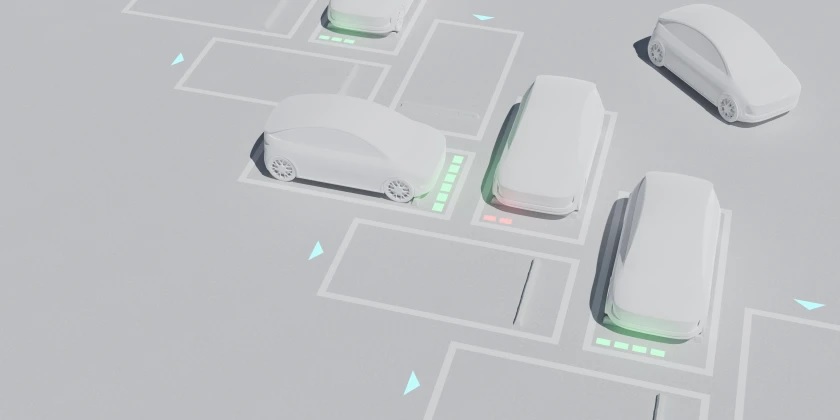Building the electric vehicle charging infrastructure that municipalities need

Growth rates for EV charging stations are higher than ever before. The installation of public chargers grew at a rate of 37% in 2021, while fast-charging systems increased by a whopping 48%.
But North American municipalities need many more charging stations to meet increasing numbers of EVs. The U.S. commands a top-heavy ratio of 18.2 EVs per charging station, which is the second-highest EV-to-infrastructure ratio in the world.
To fix this, major metros and cities need to double down on creating effective EV charging infrastructure. Developing a proper EV environment today can ensure a better tomorrow, especially as EVs become the norm rather than the exception.
Let’s look at the tools needed to accomplish this task.
The types of electric vehicle charging infrastructure that cities need
Charging stations are just one piece of the EV infrastructure puzzle. To “fuel” EVs for your fleet and local citizens alike, you need to acquire one of three charging solutions:
- Level 1 chargers: This type of charging equipment delivers power via 120-volt AC plugs. Every one hour of charge provides approximately five miles of range, assuming that you have 1.9-kilowatt charging power.
- Level 2 chargers: A level 2 charger can power up vehicles using 240-volt or 208-volt chargers. Every one hour of charge can provide about twenty-five miles of range, as long as you have 6.6-kilowatt charging power.
- Level 3 chargers: Sometimes referred to as DC fast charging, level 3 chargers adapt to three different plugs: CCS connectors, CHAdeMO connectors, and Tesla connectors. Every one hour of charge provides 200 to 400 miles of range, though results may vary depending on vehicle type and battery condition.
Keep in mind that these are simply the charging port types required for EV infrastructure. Depending on your municipality’s greening initiatives, you may also want to consider additional EV tools:
- Monitoring software for charging stations, including fuel monitoring systems and surveillance cameras
- EV charging station maintenance programs, including on-call service operatives, equipment warranties, and regular infrastructure updates
- Charging for other forms of transportation, including buses, boats, and even helicopters
How to build electric vehicle charging infrastructure for your city
The creation of sustainable EV charging infrastructure requires planning and attention to detail. Thankfully, the right foundation can help cities and civilians better prepare for North America’s EV future. There’s a three-step process involved.
1. Start with the initial delegation of work
The development of EV charging infrastructure is no easy task and certainly not a job for just one or two individuals. It’s a good idea to develop a specific task force to drive your initiatives home, then delegate work to different departments to ensure a streamlined process.
You can get started by asking the following questions:
- Who is going to manage the project management of your EV charging initiative?
- What teams do you need to create or loop in while developing systems and processes?
- Where are your existing resources and infrastructure components? Do you have an existing audit, or can you audit them now?
Consider using an Excel sheet or project management tool for more transparent visibility.
2. Plan your strategy based on data
Now that you’ve established a task force for your initiative, it’s time to determine an overarching strategy based on available data.
First, look at the metrics surrounding your city to set clear and measurable goals. Then, identify locations for EV chargers and set timelines for their installation. You may also want to:
- Check congestion in certain areas.
- Identify neighborhoods with high numbers of EVs.
- Distinguish between upgrades and new installations.
Contracting with an EV consultant can help you make more informed decisions before breaking ground.
3. Partner with EV infrastructure providers
You need to find ways of partnering with EV infrastructure suppliers to protect and maintain your investment. Fortunately, there are multiple ways to establish ongoing partnerships and develop new relationships over time:
- Visit conferences and tradeshows to find suppliers in your area.
- Create an RFP to solicit suppliers through manual methods.
- Rely on cooperative contracts to streamline the process.
With Sourcewell, you can find, verify, and sign a cooperative contract for EV charging infrastructure in just two weeks or less.
Acquiring EV infrastructure through a partnership with Sourcewell
Sourcewell is a government entity serving other government entities in the search for cooperative contracts for EV equipment. Its team believes that all municipalities deserve access to cutting-edge EV charging infrastructure, regardless of size, experience, or budget. To assist more government entities in their journey to electric fleets, Sourcewell offers:
- Partnerships with leading EV suppliers, including Drive EV fleets
- Contract-purchasing solutions with hundreds of competitively solicited contracts
- Value-added information with free resources for electrifying your fleet
The transition to EVs is increasingly feasible for cities with the help of Sourcewell’s cooperative contracts.
Sourcewell awards contracts in electric vehicle supply equipment. These contracts assure that government entities can take the first step in creating the infrastructure to support green initiatives. See how Sourcewell can save you time and money while getting the fleet equipment that you need already on contract.


